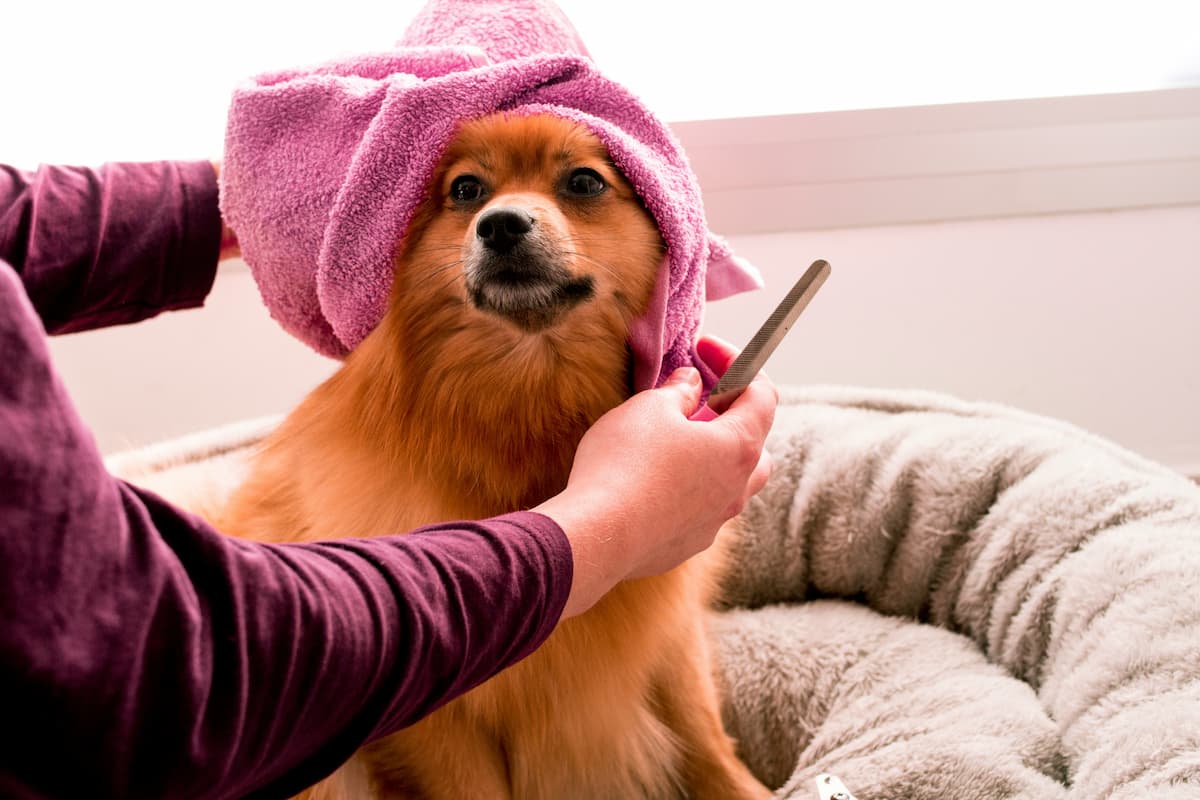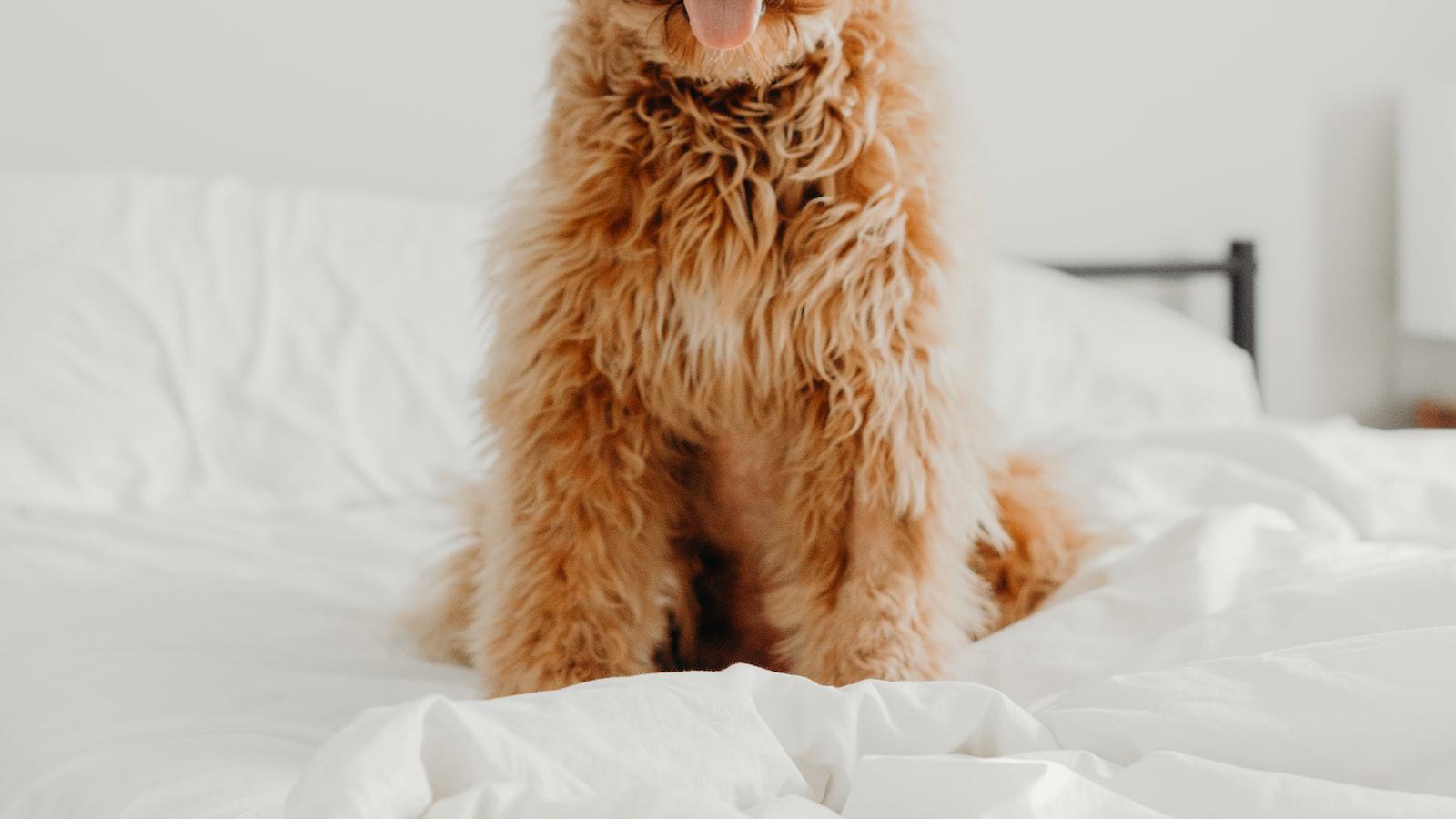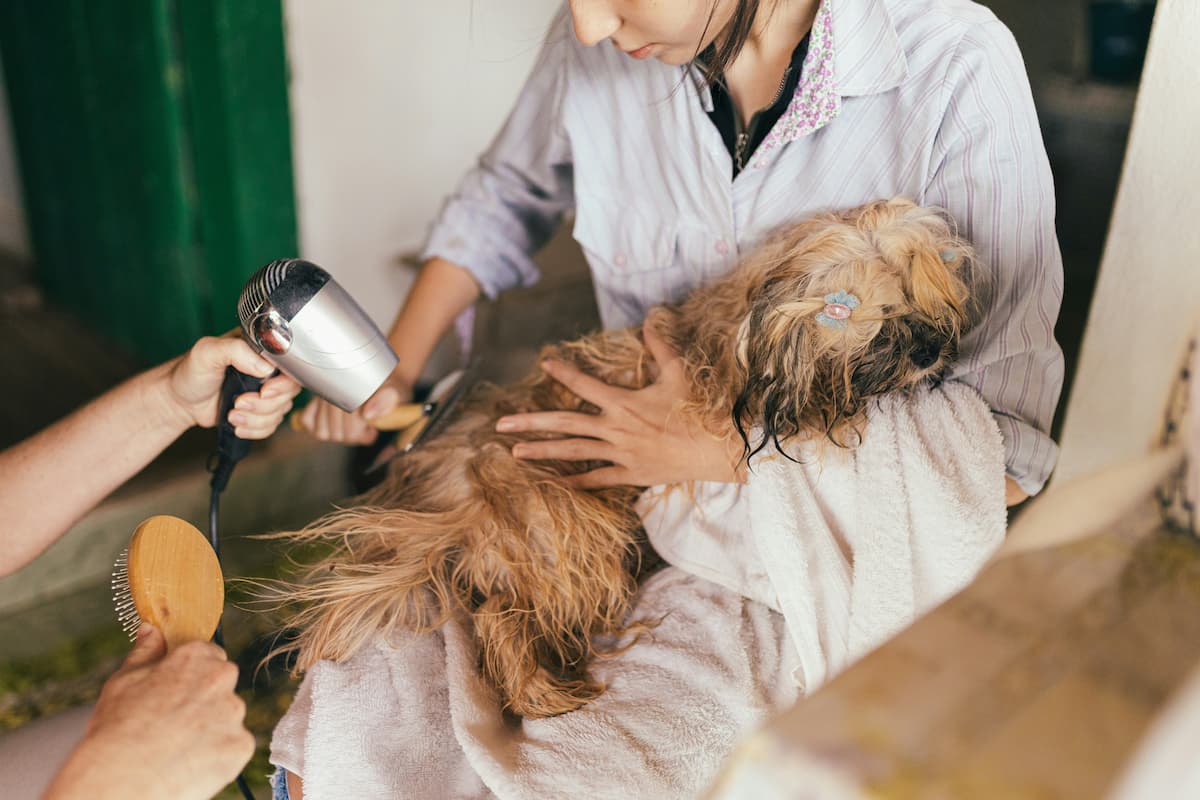Have you ever noticed your furry friend shedding hair on their back and wondered why?
Understanding the Natural Shedding Process
Many dog owners often have trouble with their pets shedding hair and leaving it on the floor for them to clean up.
And while it is certainly annoying, it is a perfectly natural process.
First and foremost, it’s important to remember that shedding is a completely normal and healthy part of a dog’s life.
Dogs, just like humans, have a hair growth cycle consisting of three phases: anagen, catagen, and telogen.
During the anagen phase, which is the active growth period, hair follicles produce new hair.
The catagen phase is a transitional period, while the telogen phase is the resting period.
During the telogen phase, which typically lasts for a few weeks to a couple of months, the old hair shafts prepare to shed and new ones begin to grow.
The shedding process can vary depending on factors such as breed, age, and certain health conditions.
Some dogs may shed minimally, while others may appear to be fur-releasing machines!
However, it’s important to note that excessive or patchy hair loss may be a sign of an underlying health problem, and it’s always best to consult your veterinarian if you have any concerns.
Other Factors That Contribute to Excessive Shedding
There are several other factors that can contribute to this common problem.
One common cause of excessive shedding is seasonal changes.
Just like humans, dogs go through natural shedding cycles where they lose old or damaged hair and grow new fur.
During these periods, you may notice that your furry friend’s back is particularly prone to shedding.
This is because the hair on their back is often longer and thicker, making it more noticeable when it falls out.
Additionally, certain breeds, such as Golden Retrievers and Huskies, are known for their heavy shedding during certain seasons.
Another factor that can contribute to excessive shedding is poor nutrition.
A balanced diet plays a crucial role in maintaining a healthy coat and preventing hair loss.
If your dog is not getting the necessary nutrients from their food, their coat can become dull and prone to shedding.
Stress and anxiety can also lead to excessive shedding in dogs.
Just like humans, dogs can experience stress from various factors such as changes in their environment, separation anxiety, or loud noises.
When dogs are stressed, their body reacts by releasing stress hormones that can affect their skin and hair.
Common Skin Conditions Affecting the Back
Skin conditions can affect our furry friends just as much as they can affect us humans.
And this may result in your dogs excessively shedding hair on their backs. One possible cause of hair loss on a dog’s back is a condition called alopecia.
Alopecia can be caused by various factors, including allergies, hormonal imbalances, or even underlying medical conditions.
It is important to consult with a veterinarian to determine the exact cause of the hair loss and develop an appropriate treatment plan.
Another common reason for hair loss on a dog’s back is excessive scratching or biting.
Dogs may scratch or bite their backs due to insect bites, fleas, or skin irritations.
This can lead to hair loss as the dog repeatedly irritates their skin, causing the hair to fall out.
Regular grooming, flea prevention, and addressing any underlying skin conditions can help reduce excessive scratching and prevent further hair loss.
In some cases, hair loss on the dog’s back may be a symptom of a more serious underlying health issue such as autoimmune diseases or certain infections.
If you notice extensive hair loss, sores, redness, or any other concerning symptoms, it is crucial to seek veterinary attention promptly.
Early diagnosis and treatment can help manage the underlying condition and prevent further complications.
Tips for Reducing Back Hair Shedding
Shedding more often be a natural process for our furry friends, but it can also be a sign of underlying health problems.
Here are some essential tips for healthy hair in your precious pup:
- A healthy diet plays a vital role in maintaining a shiny and healthy coat.
Providing your dog with a balanced and nutritious diet will contribute to reducing excessive hair loss on their back.
Make sure their meals are packed with high-quality proteins, such as lean meats and fish, as well as omega-3 fatty acids found in foods like flaxseed and salmon.
These nutrients help promote hair growth and minimize shedding.
- Regular brushing not only helps manage tangles and prevent matting, but it also reduces the amount of hair shed.
You can use a grooming brush or a slicker brush designed specifically for your dog’s breed and coat type.
Be gentle yet thorough, ensuring you go deep enough to reach the undercoat.
Don’t forget to give your furry friend some extra love during grooming sessions, as this strengthens the bond between you and your pooch!
- In addition to a healthy diet and regular grooming, it’s crucial to keep your dog’s stress levels in check.
If you suspect that stress is causing your dog’s excessive shedding, try to identify the source of their anxiety and provide them with a calm and secure environment. Establish a routine that includes regular exercise, playtime, and a comfortable place to rest.
Providing toys or engaging in interactive games can also help keep your dog mentally stimulated and stress-free, ultimately reducing the shedding on their back.
Remember, a happy dog equals a healthier coat!
- If you suspect that your dog is suffering from a skin condition like alopecia, always consult a veterinarian as soon as possible so you can determine the cause and the best possible treatment.
FAQ
Q: What causes hair loss on a dog’s back?
A: Great question! There can be several reasons why your furry friend may start losing hair on their back. One possibility is a condition called alopecia, which basically means hair loss.
Alopecia can be caused by various factors, such as allergies, hormonal imbalances, or even certain infections.
Q: Are allergies a common culprit behind hair loss in dogs?
A: Absolutely! Allergies are actually one of the leading causes of hair loss in our four-legged pals. Just like humans, dogs can be allergic to things like pollen, mold, dust mites, or certain foods.
When they come into contact with these allergens, their immune system goes into overdrive, leading to scratching, itching, and ultimately hair loss.
Q: Can hormonal imbalances be responsible for hair loss too?
A: You bet! Hormones play a significant role in a dog’s coat health.
When their hormone levels become imbalanced, particularly due to conditions like hypothyroidism or Cushing’s disease, it can wreak havoc on their lovely fur. These hormonal imbalances disrupt the normal hair growth cycle, leading to patches of hair loss on their back and elsewhere.
Q: Is there any connection between infections and hair loss in dogs?
A: There definitely can be! Certain infections, like fungal or bacterial ones, can cause dogs to lose hair on their back.
These pesky little invaders can irritate their skin, making them scratch excessively, and potentially leading to hair loss.
So, if you notice your pooch scratching more than usual, it might be worth considering a possible infection.
Q: Can I do anything to help prevent or treat my dog’s hair loss?
A: You sure can! If you suspect allergies are the source of your pup’s hair loss, it’s a good idea to consult with your vet.
They may recommend allergy testing to identify the specific triggers and manage them accordingly.
Treating hormonal imbalances typically involves medication or a tailored diet plan, so a vet visit is crucial.
In cases of infections, your vet will often prescribe appropriate medications like topical creams or oral antibiotics to clear things up.
Q: Should I be concerned if my dog is losing hair on their back?
A: It’s always best to stay vigilant when it comes to your furry friend’s health, so if you notice any unusual hair loss, it’s worth scheduling a vet appointment.
While some hair loss can be normal, excessive or widespread loss could indicate an underlying issue that needs attention.
Your vet can help determine the cause and provide the most suitable solutions for your buddy.
Closing Remarks
Shedding may be frustrating but it’s a natural and normal process that occurs due to a combination of factors, including genetics, seasonal changes, changes in hormones, and skin conditions.
Remember, shedding is a completely natural occurrence in dogs, so there’s no need to worry.
However, keeping an eye out for excessive hair loss or signs of discomfort is always a good idea, as it could indicate an underlying health issue.
Consulting your veterinarian is the best way to ensure your pup’s well-being.
In the meantime, regular grooming, such as brushing your dog’s fur to remove loose hair, can help minimize shedding around the house.
Embrace the inevitable vacuum dance and appreciate your pup’s never-ending supply of unconditional love, even if it means occasionally finding a stray fur tumbleweed in your living room.
So, next time you see your pooch leaving a trail of hair on your favorite couch or carpet, remember that it’s just a small sacrifice for the joy and companionship they bring to our lives.
Keep loving, keep grooming, and keep on embracing that dog hair-covered life with a smile!











